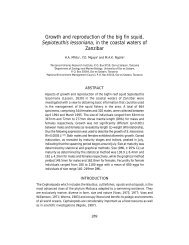gpa_east_africa_case.. - GRID Africa GeoPortal - UNEP
gpa_east_africa_case.. - GRID Africa GeoPortal - UNEP
gpa_east_africa_case.. - GRID Africa GeoPortal - UNEP
Create successful ePaper yourself
Turn your PDF publications into a flip-book with our unique Google optimized e-Paper software.
aesthetic and recreational value, is very relevant to many aspects of coastal zonemanagement.Option Value derives from maintaining the option of taking advantage of the direct and indirectbenefits of a coastal site in the future.Non-Use (Existence or Biodiversity) Value. In contrast to use value, non-use value derivesfrom the benefits which do not involve using the site in any way, the value that people derive fromthe knowledge that the site exists, even if they may never actually visit it. Yet, people place avalue on the existence of coastal and marine ecosystems. If, for example, coastal forests, sanddunes or coral reefs became degraded, many any people would feel a definite sense of loss.Non-use value is the most difficult type of value to estimate, since in most <strong>case</strong>s it is not, bydefinition, reflected in production or consumption behaviour. This category of value also hasobvious relevance to coastal zone management.1.3 Valuation TechniquesResource valuation methods differ in terms of what they attempt to measure. Some aim tomeasure values directly, others aim to measure the indirect contributions of value to differentsocial and economic activities. The values of coastal resources that can be measured directly,market-based behaviour is most appropriate. For non-market values it is necessary to applyproxies to capture indirect and the non-use value. The table below attempts to put together thecategories of value outlined above with the corresponding menu of available valuationtechniques.Category ofValueDirect UseValueProductionentering themarketIndirect UseServices andOptionExistenceValueChoice of Valuation TechniqueResource Valuation Technique Measure of valueExamples:• Tourism income• Fisheries• Timber• Sand quarryingBiodiversityHabitatRecreationAesthetic-amenityMarket-based dataChange-in-Productivity(Production quantities)Surrogate-proxy marketdata• Cost-based valuation• Contingent valuation(willingness-to-pay)Willingness to pay(or accept payment forloss)• Contingent valuation• Travel costMarket pricesIf market pricesunreliable, alternative costapproaches• Cost of replacement• Defensiveexpenditure• Opportunity Cost(Foregone income)Questionnaire dataProductivity or Market-price Methods. Direct benefits from the use of coastal resources, whichinvolve production activities are reflected in marketable quantities and prices. Direct benefits fromthe coastal environment can be measured using market information. The most obvious exampleis the price paid by tourists to stay and be near the coast. The revenue generated by hotelsprovides a direct measure of the value people place on the use of coastal resources. Whenmarket prices and not available or unreliable, proxy market techniques may be used such asreplacement costs, defensive expenditure, opportunity cost, etc.• Replacement cost. The cost of replacing beach facilities by swimming pools, the cost ofreclaiming beaches, the cost of cleaning up a polluted beach etc., would indicate theminimum use value of the beach.• Protective expenditure cost. The expenditure on engineering works to protect the coastagainst erosion and maintain a particular level of quality and productivity (preventive orprotective investment) also serves to estimate the value of benefits from the use of the beachand its quality.Final Draft Report – Cost Benefit Case StudiesGPA Strategic Action Plan on Sewage, October, 200010



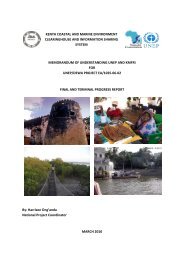
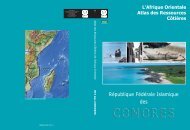
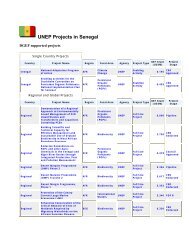

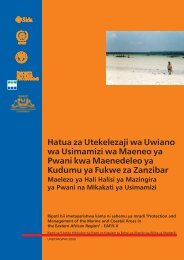
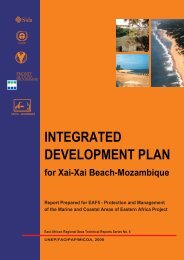
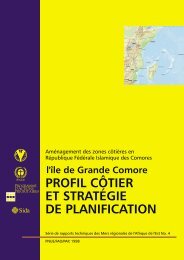
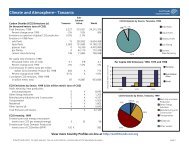

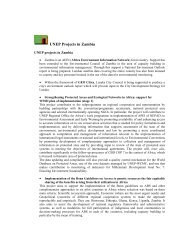
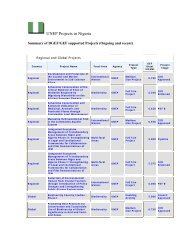
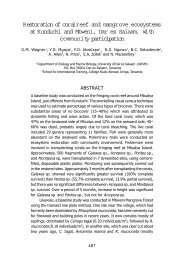
![Please Click to download [English] - GRID Africa GeoPortal - UNEP](https://img.yumpu.com/30633391/1/184x260/please-click-to-download-english-grid-africa-geoportal-unep.jpg?quality=85)
